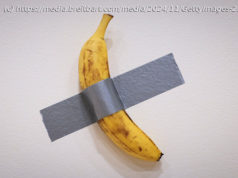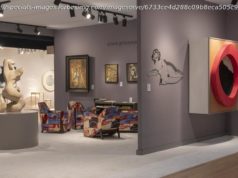There are many reasons to be excited about the Black Panther film, and the feel and look of Wakanda is one of those many. Black Panther costume designer Ruth E. Carter, who has also lent her talents to acclaimed works like Selma and the Roots revival…
There are many reasons to be excited about the Black Panther film, and the feel and look of Wakanda is one of those many. Black Panther costume designer Ruth E. Carter, who has also lent her talents to acclaimed works like Selma and the Roots revival, created the outfits that the Wakandan characters wear in the movie by taking her inspiration from real African cultures like the Tuareg, the Zulu, and the Maasai. But, even though she is African American, as Carter describes to me over the phone one Friday morning, she still had to do the work to respect these cultures and represent their clothing accurately. And that’s the difference between cultural appreciation and cultural appropriation — doing the work.
„Appropriation is alive and well,“ Carter says. „But as we put together Black Panther, we did it from a purist point of view. I feel like we are educating people with more of an original plan or more of an original take. [And] at least if someone is adorning a Maasai’s headpiece, and they got the idea from Black Panther, it actually is something that we used from the real thing and not from some fictitious thing.“
So, yes, Carter traveled to Africa. She spoke to the people of the continent. She made sure she understood the meaning and the history behind every artifact that was replicated for the movie. Sure, according to her, she has always been a hands-on department head, who was never content to stay home while her team pieced her vision together for her. But she also understood the importance of getting it right — so that, when people flock to the theaters on Feb. 16 to see Marvel’s Black Panther, what they’ll really be doing is appreciating cultures that have, for too long, been slighted or stereotyped.
As part of the African diaspora, authenticity was important to Carter, who took care not to blend the cultures she researched into a monolith as she put the costumes together with the help of various departments — researchers, shoppers, illustrators, and Marvel executives overseeing it all.
„I’m not afraid of people using the Black Panther model with the African influences and redressing themselves or using them in some kind of way to express themselves because I think it’s honoring the tribes,“ she says. „I was very specific about having a totality. A person was dressed as a Zulu or dressed as a Maasai or dressed as a Tuareg, [We did] not mix the cultures. We won’t see someone who looks like a clown because he’s got a Zulu hat on and a Tuareg drape and Hemba anklets or something, if he’s taking it from the Black Panther film… It was not messed up in that way.“
But the need to get these costumes right, and represent these cultures as genuine and different cultures, felt even more important to Carter in the wake of now-infamous claims against President Donald Trump. On Thursday, Jan. 11, reports from an immigrant meeting between the president and several senators claimed that Trump had referred to places like Haiti, El Salvador, and countries in Africa as „sh*tholes.“ (The president denied that he had made any such comments, a denial that both was supported and disputed by lawmakers who were in the room.) The designer cites the reported comments as a perfect example of why there’s such a mighty need for a movie like Black Panther to not only exist, but to give a more nuanced portrait of Africa than many Americans — our President reportedly included — seem to have.
„I hope that people take culture seriously. I hope that people [watch] Black Panther and realize that there are no sh*tholes. I hope that people look at the Black Panther costumes and they realize that what they thought was Africa is not,“ Carter says. She even points out gaps in her own knowledge, recalling that she wondered why the Sub-Saharans wore red clay all over their bodies only to discover, through research, that the „mud-looking“ clay was actually mixed with Shea butter and emollients that made it a natural sunscreen.
„Instead of looking at it with this naive, negative view that it’s a primitive way of life… I’m hoping that Black Panther makes African culture come to life again for people who really looked at it as a mystery,“ she says. „It’s really sad that even our president has a crazy negative view of this continent. I just hope that people just go, ‚Wow, that’s great! I want to know more about it! I want to dress like the Tuareg!'“ And she doesn’t believe that dressing like the Tuareg would verge on cultural appropriation, if it’s done with the respect and the research required. „I feel like even those of African descent, Africans themselves, will be joyous to see that there’s an Irish guy dressed in a Hemba costume [for Halloween]. I think that culture is for all of us. It’s for everyone,“ she says.
Spoilers for Black Panther ahead.
This is actually an issue that is explored in the film. While Nakia, a spy and T’Challa’s former lover, urges him to open the borders of Wakanda to admit refugees and share their technology and power with a world in need, T’Challa worries that doing so will cause invasions, colonizations, and, most importantly, a loss of culture and tradition. T’Challa has all of history to back up his feelings, but, ultimately, it is Nakia’s stubbornness and empathy that wins out. After all, with its advanced technology, Wakanda is certainly in a position to help those in need and violently defend their borders from those who would attempt to exploit them.
Avoiding exploitation is part of why it was so important to Carter to make sure that the antique pieces used for Black Panther were the „real thing“, or based on a real antique or real cultural adornment, and not something you could buy in bulk at a tourist shop. „Every time someone does an imitation of a real antique pieces or a real African piece,“ she says. „I feel like it loses a little bit of its truth or a little bit of its realness.“
This is a point that she cannot emphasize enough: the research. „I spent the time… so that I really understood it. And I asked the questions,“ she continues, citing, as an example: „I asked people to tell me why the Zulu woman wears this headdress [ the isicholo].
Start
United States
USA — Art How To Keep 'Black Panther' Halloween Costumes From Becoming Cultural Appropriation






